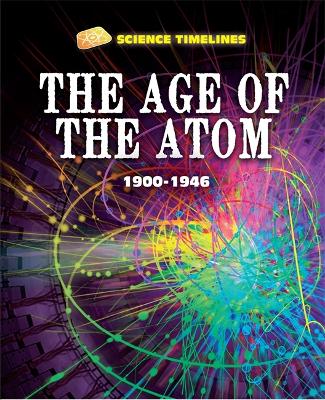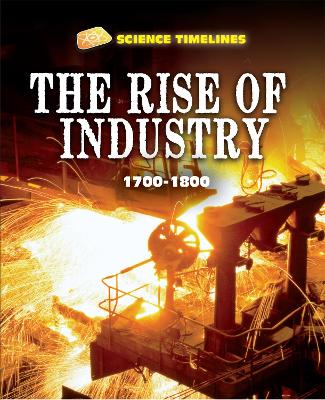Science Timelines
5 total works
A must for Key Stage 3 students aged 11 and up this engaging book uses timelines to describe scientific and technological advances from 1800 to 1900.
The 19th century saw the birth of photography and the internal combustion engine, which led to the production of the first cars. Scientists developed theories about evolution, genetics and the nature of elements. But the end of the century, they had discovered the elusive electron and its role in electricity.
Each volume in the five-book series examines the story of scientific discovery in a series of timelines and each chapter examines either a particular aspect of science, or the life and work of an important scientist of the time. Parallels with other fields, such as astronomy and mathematics are highlighted so that readers can gain a rounded understanding of how scientists build on what has gone before and how science flourished in different parts of the world, or in different disciplines at the same time.
A must for Key Stage 3 students aged 11 and up, this engaging book uses timelines to describe scientific and technological advances from 1947 to the present day. The Digital Age investigates recent scientific developments, including major scientific advancements of the understanding of human genetics and the invention of the Internet.
Each volume in the five-book series examines the story of scientific discovery in a series of timelines and each chapter examines either a particular aspect of science, or the life and work of an important scientist of the time. Parallels with other fields, such as astronomy and mathematics are highlighted so that readers can gain a rounded understanding of how scientists build on what has gone before and how science flourished in different parts of the world, or in different disciplines at the same time.
A must for Key Stage 3 students aged 11 and up, this engaging book uses timelines to describe scientific and technological advances from 1500 to 1700. The Birth of Science investigates scientific developments in the early modern era and includes the discoveries of important scientific figures such as Galileo, Copernicus and Newton.
Each volume in the five-book series examines the story of scientific discovery in a series of timelines and each chapter examines either a particular aspect of science, or the life and work of an important scientist of the time. Parallels with other fields, such as astronomy and mathematics are highlighted so that readers can gain a rounded understanding of how scientists build on what has gone before and how science flourished in different parts of the world, or in different disciplines at the same time.
A must for Key Stage 3 students aged 11 and up this engaging book uses timelines to describe scientific and technological advances from 1900 to 1946.
In the first half of the 20th century, science changed the lives of everyone. Scientists explored the nature of atoms and discovered the immense power they contained. Radio and television transformed the way people communicated, and aeroplanes and cars made the world seem smaller.
Each volume in the five-book series examines the story of scientific discovery in a series of timelines and each chapter examines either a particular aspect of science, or the life and work of an important scientist of the time. Parallels with other fields, such as astronomy and mathematics are highlighted so that readers can gain a rounded understanding of how scientists build on what has gone before and how science flourished in different parts of the world, or in different disciplines at the same time.
A must for Key Stage 3 students aged 11 and up, this engaging book uses timelines to describe scientific and technological advances from 1700 to 1800. The Rise of Industry looks at scientific discoveries in the eighteenth century, covering the work of James Watt, Benjamin Franklin, Jethro Tull, Antoine Lavoiser and others. The steam engine, farm machinery, navigation at sea and early railways are included.
Each volume in the five-book series examines the story of scientific discovery in a series of timelines and each chapter examines either a particular aspect of science, or the life and work of an important scientist of the time. Parallels with other fields, such as astronomy and mathematics are highlighted so that readers can gain a rounded understanding of how scientists build on what has gone before and how science flourished in different parts of the world, or in different disciplines at the same time.




